
Alfred Twardecki lecture from the conference “Olbia in the Hunnic period”
28 grudnia 2022
Zbyszekcoments closed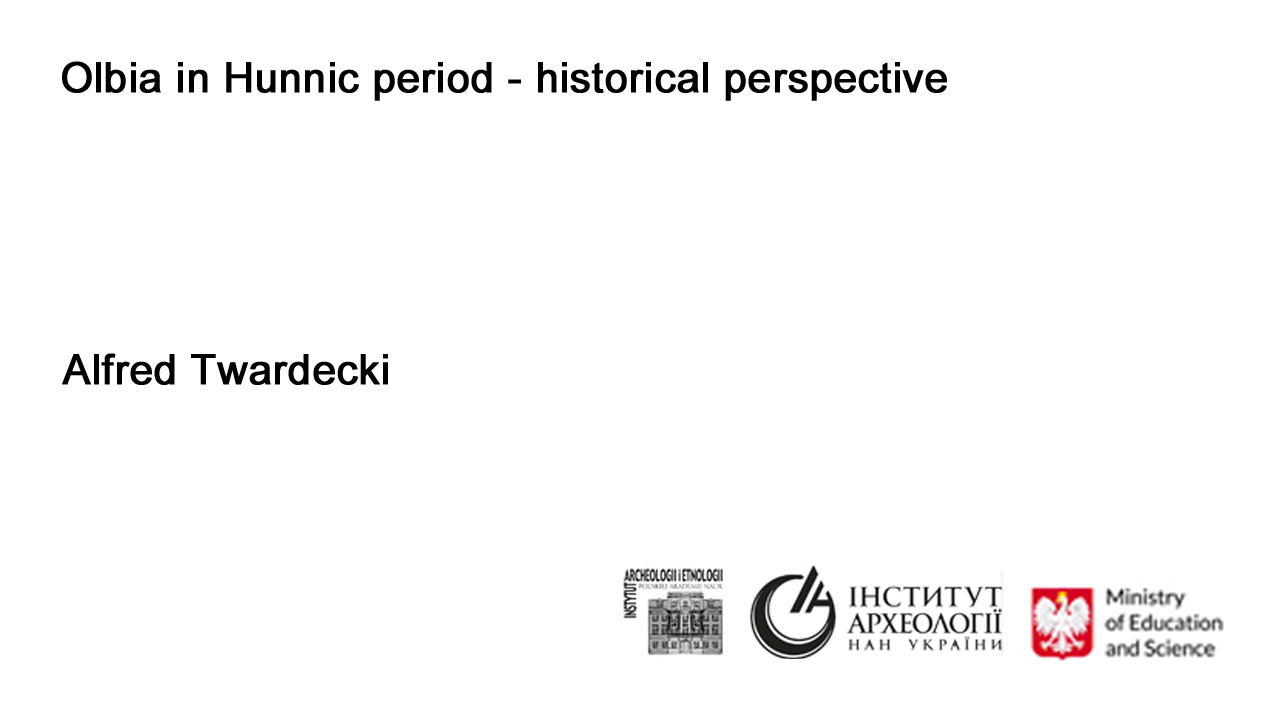
Na kanale Archeo.TV jest już dostępny 16 - ostatni - referat z konferencji "Olbia in Hunnic Period", która odbyła się 5-6 listopada 2021 roku ![]()
Institute of Archaeology and Ethnology of the Polish Academy of Sciences
and
Institute of Archaeology of the National Academy of Sciences of Ukraine
presents a lecture from a scientific conference:
Olbia in Hunnic Period
organized at November 5–6, 2022
Author: Alfred Twardecki
Title: Olbia in Hunnic period - historical perspective
Abstract: In the presentation the author shortly sums up general results of the excavations led at the trench R-23 in years 2016-2021 by Polish-Ukrainian team but mainly will try in the later part to put results on the broader historical perspective. The base of that perspective will be at first line historical literary sources dealing with the history of the area in late Roman period. Olbia is not often mentioned in that source, but they give us information about historical events on the territory between Dnieper and Danube rivers including Hunnic invasion headed by Attila on the Eastern and Western Roman Empires. The author tries to initially interpret the new archaeological data from Olbia against the background of known historical events.
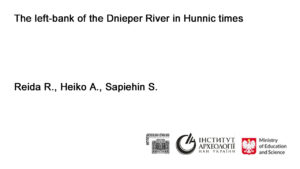
Reida R., Heiko A., Sapiehin S., lecture from the conference “Olbia in the Hunnic period”
21 grudnia 2022
Zbyszekcoments closed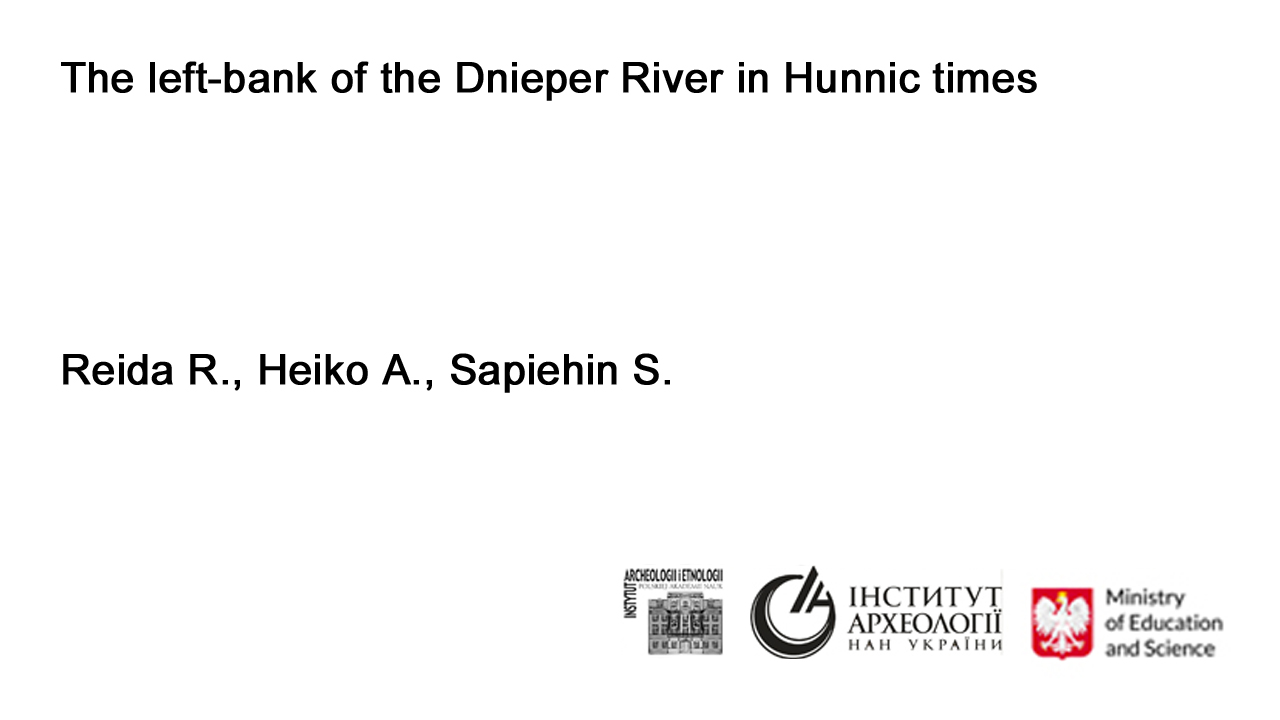
Na kanale Archeo.TV jest już dostępny 15 referat z konferencji "Olbia in Hunnic Period", która odbyła się 5-6 listopada 2021 roku ![]()
Institute of Archaeology and Ethnology of the Polish Academy of Sciences
and
Institute of Archaeology of the National Academy of Sciences of Ukraine
presents a lecture from a scientific conference:
Olbia in Hunnic Period
organized at November 5–6, 2022
Authors: Reida R., Heiko A., Sapiehin S.,
Title: The left-bank of the Dnieper River in Hunnic times
Abstract: The investigated area covers the forest steppe territory on the left bank of the Dnieper from the latitude of the city of Kyiv in the north to the Vorskla River basin with its left tributaries, the Kolomak and the Merla, in the south. Several sites from the Hunnic period, that is from the year 375 to the first third or first half of the 5th century were investigated. Most of these represented Chernyakhov culture, the most important among them being the burial ground (more than 150 burials excavated) in the vicinity of the village of Shishaki in the Poltava region. Chernyakhov culture, which was already well established in the forest steppe landscape of the region, was undergoing cultural changes that can be summarized as follows:
1) a merging of different inhumation rites (orientation of the burials with heads to the north and west);
2) emergence of pronounced elite burials (tribal nobility);
3) a noticeable increase in the volume of imported products.
One of the main ethnic components in this region were a nomadic pastoral peoples (Alans?) who came into contact with groups of the Chernyakhov population. The lower reaches of the left bank of the Vorskla River was where contacts between the two were among the most active as attested by the Kantemirovka and Storozhevoe burial grounds. The arrival of the Huns in this territory had little effect on the lifestyle of this native population, presumably representing chiefly the Chernyakhov culture.

Yvgeniya Yanish lecture from the conference “Olbia in the Hunnic period”
22 listopada 2022
Zbyszekcoments closed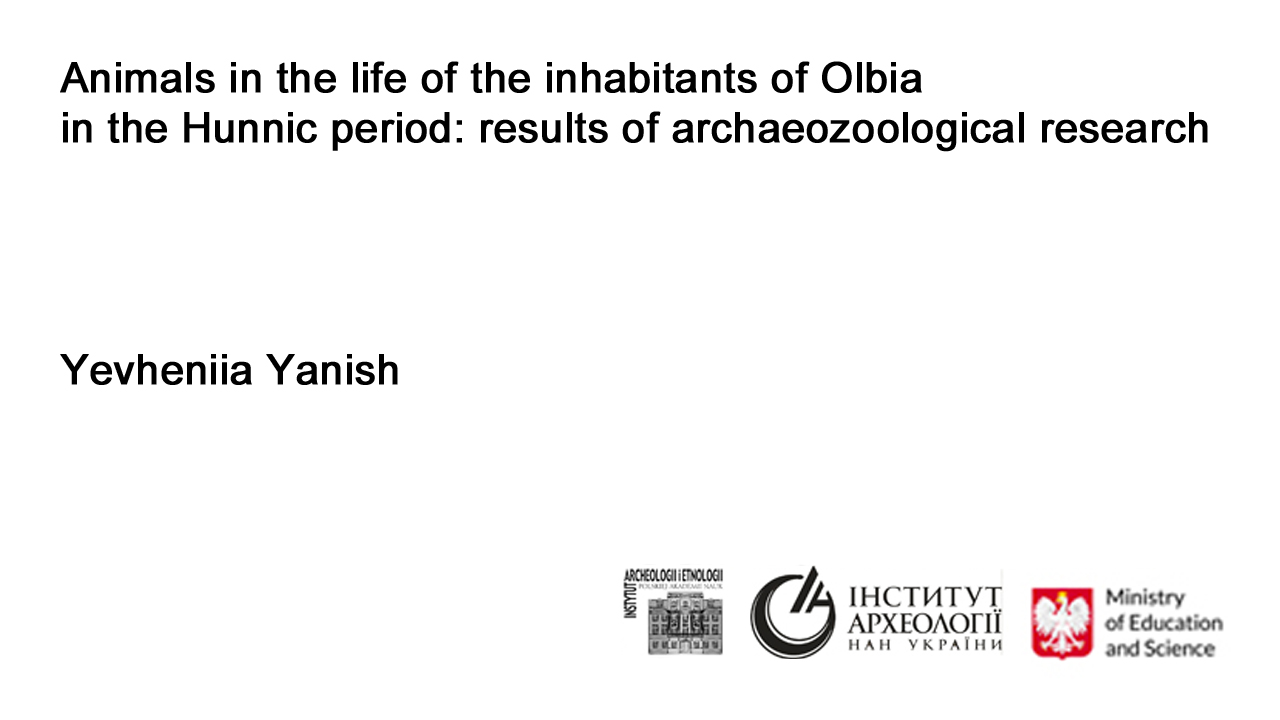
Na kanale Archeo.TV jest już dostępny 12 referat z konferencji "Olbia in Hunnic Period", która odbyła się 5-6 listopada 2021 roku ![]()
Institute of Archaeology and Ethnology of the Polish Academy of Sciences
and
Institute of Archaeology of the National Academy of Sciences of Ukraine
presents a lecture from a scientific conference:
Olbia in Hunnic Period
organized at November 5–6, 2022
Author: Yvgeniya Yanish
Title: Animals in the life of the inhabitants of Olbia in the Hunnic period: results of archaeozoological research
Abstract: Research at Olbia has been going on for over 120 years and has included a considerable amount of archaeozoological material. However, studies of animal bones from the Hunnic-period layers have started only five years ago. At the moment, 8183 animal remains have been recorded from trench R-23: 66.8% mammals, 30.6% fish, 0.4% birds, 0.1% reptiles and 2.1% molluscs. Livestock was dominated by cattle and small ruminants. Wild animals accounted for 3.0% of all identifiable remains, which is a fairly large percentage compared to earlier periods at Olbia. The diversity of wild species is also greater, now including moose, deer and beavers, for which forests—floodplain forests in the studied region—are a natural habitat. In addition, there is also a growing number of representatives of hunted steppe species like saiga and kulan. Taken together, the evidence indicates a change of climate in the territory of Olbia and the Olbian chora in the late 3rd–early 4th centuries AD that can presumably be connected with the Roman climatic optimum.
https://youtu.be/AMHWrmy_UYc
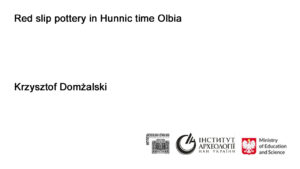
Krzysztof Domżalski lecture from the conference “Olbia in the Hunnic period”
09 listopada 2022
Zbyszekcoments closed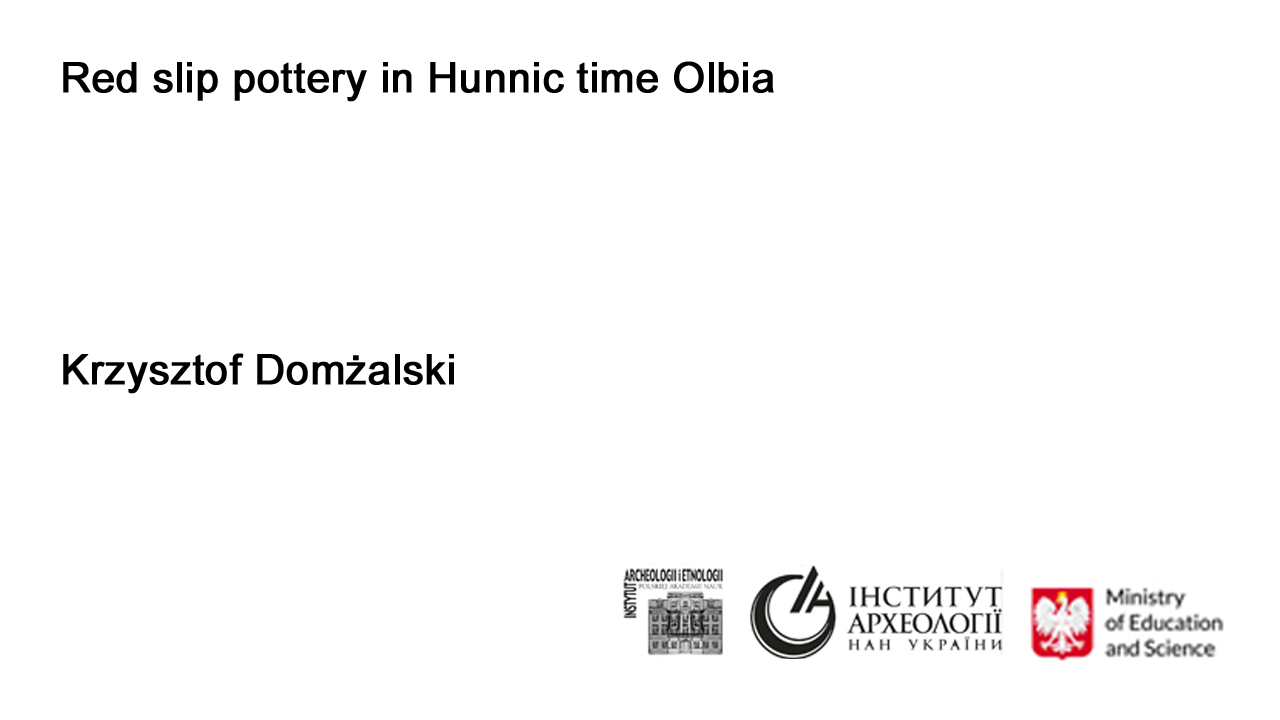
Na kanale Archeo.TV jest już dostępny 11 referat z konferencji "Olbia in Hunnic Period", która odbyła się 5-6 listopada 2021 roku ![]()
Institute of Archaeology and Ethnology of the Polish Academy of Sciences
and
Institute of Archaeology of the National Academy of Sciences of Ukraine
presents a lecture from a scientific conference:
Olbia in Hunnic Period
organized at November 5–6, 2022
Author: Krzysztof Domżalski
Title: Red slip pottery in Hunnic time Olbia
Abstract:
Late Roman red slip vessels found in Olbia are a relatively numerous category of imports, which arrived by the sea to a small settlement rebuilt on the ruins of an Early Roman tradesmen town destroyed by the Goths around the end of the third quarter of the 3rd century AD. Previous research has determined that the later settlement was established more than a decade after the destruction caused by the Goths, and existed until the very end of the 4th century or the beginning of the 5th century keeping rather regular contacts with several Black Sea coastal economic centres. The paper updates the knowledge about the Late Roman red slip ware finds more than ten years after the first publication of the introductory study on the discussed category of imports in Olbia. The source materials are mainly the finds from the regular, large scale excavations in Sector R-25, conducted since 1982. The vast majority are the finds of the Pontic Red Slip ware, coming most probably from the north-eastern part of Asia Minor. These supplies were supplemented by the much more modest imports from the Northern Africa (African Red Slip ware) and eastern Aegean (Late Roman C/Phocean Red Slip ware). The paper will present a detailed typo-chronological analysis of these finds, as well as some results of new studies, especially on the Pontic Red Slip ware vessels, the last imports of which should indicate the date of the final overseas contacts of the local community, shortly before the abandonment of the Late Roman settlement.
Referat znajdziecie na YouTube, pod tym linkiem:
https://youtu.be/E_vRxHoIba0
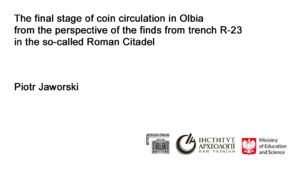
Piotr Jaworski lecture from the conference “Olbia in the Hunnic period”
12 września 2022
Zbyszekcoments closed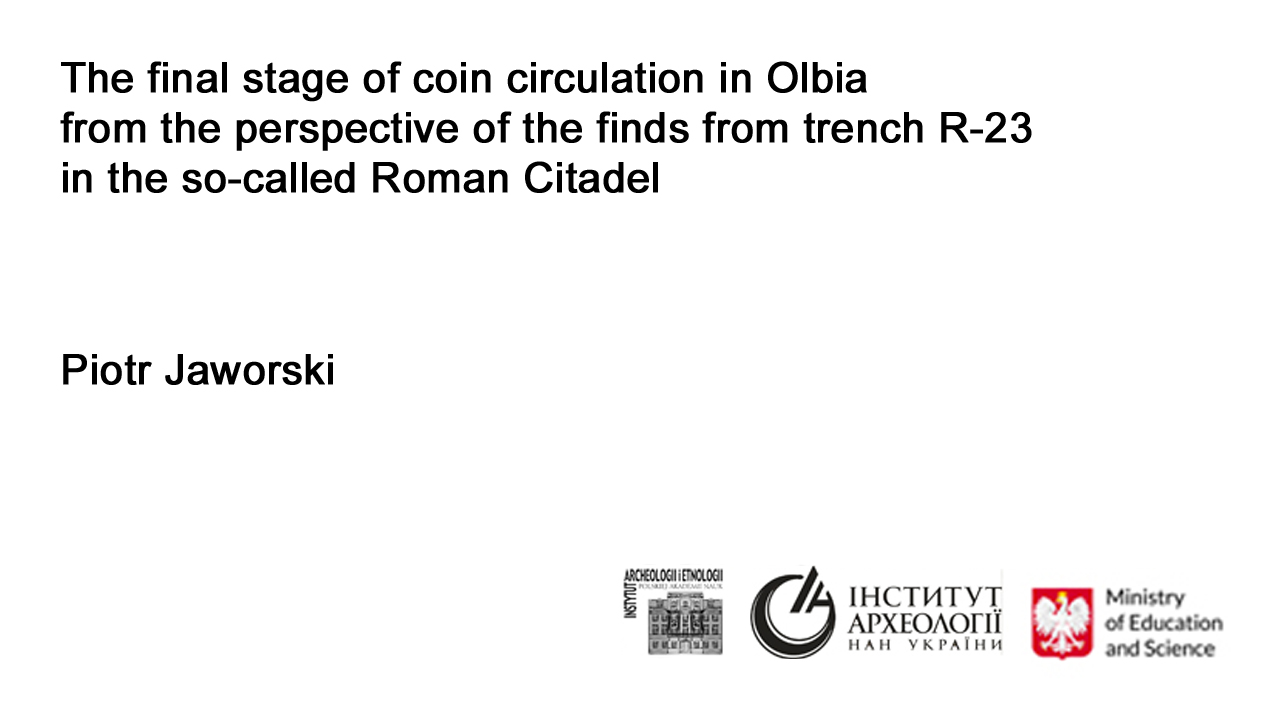
Na kanale Archeo.TV jest już dostępny 7 referat z konferencji "Olbia in Hunnic Period", która odbyła się 5-6 listopada 2021 roku ![]()
Institute of Archaeology and Ethnology of the Polish Academy of Sciences
and
Institute of Archaeology of the National Academy of Sciences of Ukraine
presents a lecture from a scientific conference:
Olbia in Hunnic Period
organized at November 5–6, 2021
Author: Piotr Jaworski
Title: The final stage of coin circulation in Olbia from the perspective of the finds from trench R-23 in the so-called Roman Citadel
Abstract: The coin of the youngest date discovered during archaeological research conducted in recent years in the so-called Roman citadel in Olbia, within trench R-23, appears to be a debased antoninianus of Valerian I dated to 253-254 AD. Interestingly, the last bronze coins of local provenance found at the site, often fragmented, are dated even earlier, to the times of the Severan dynasty. Is this tantamount with saying that the use of coins in Olbia ended with the Goth invasions?
The answer to this question lies in a study of the latest coin finds from trench R-23, based on the interpretation of a wider archaeological context formed by the remains of the settlement and production activity in the excavated area, which is dated to the 4th and the beginning of the 5th century.


